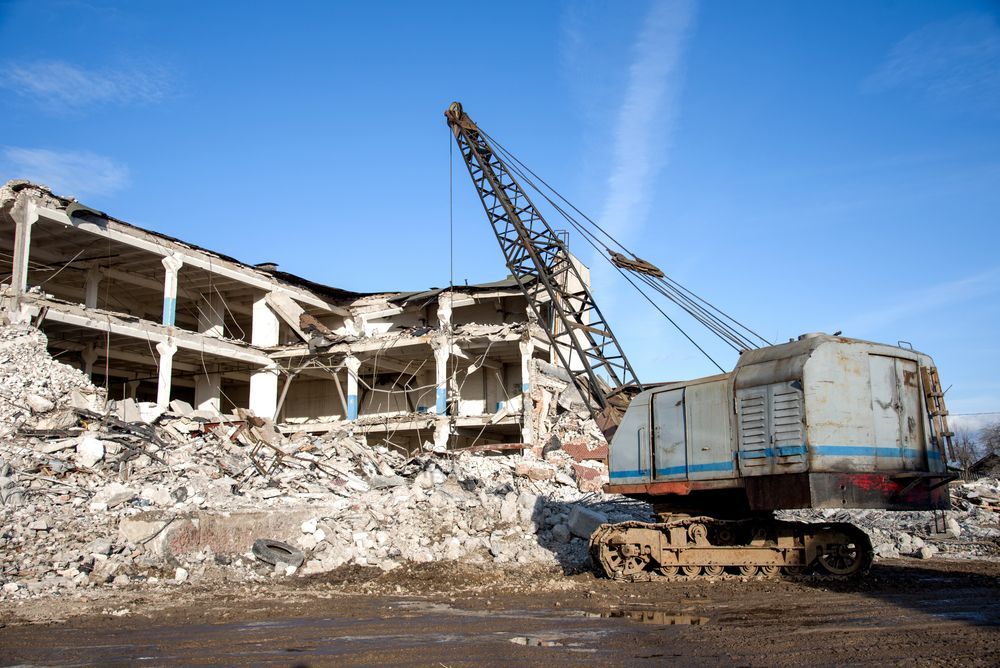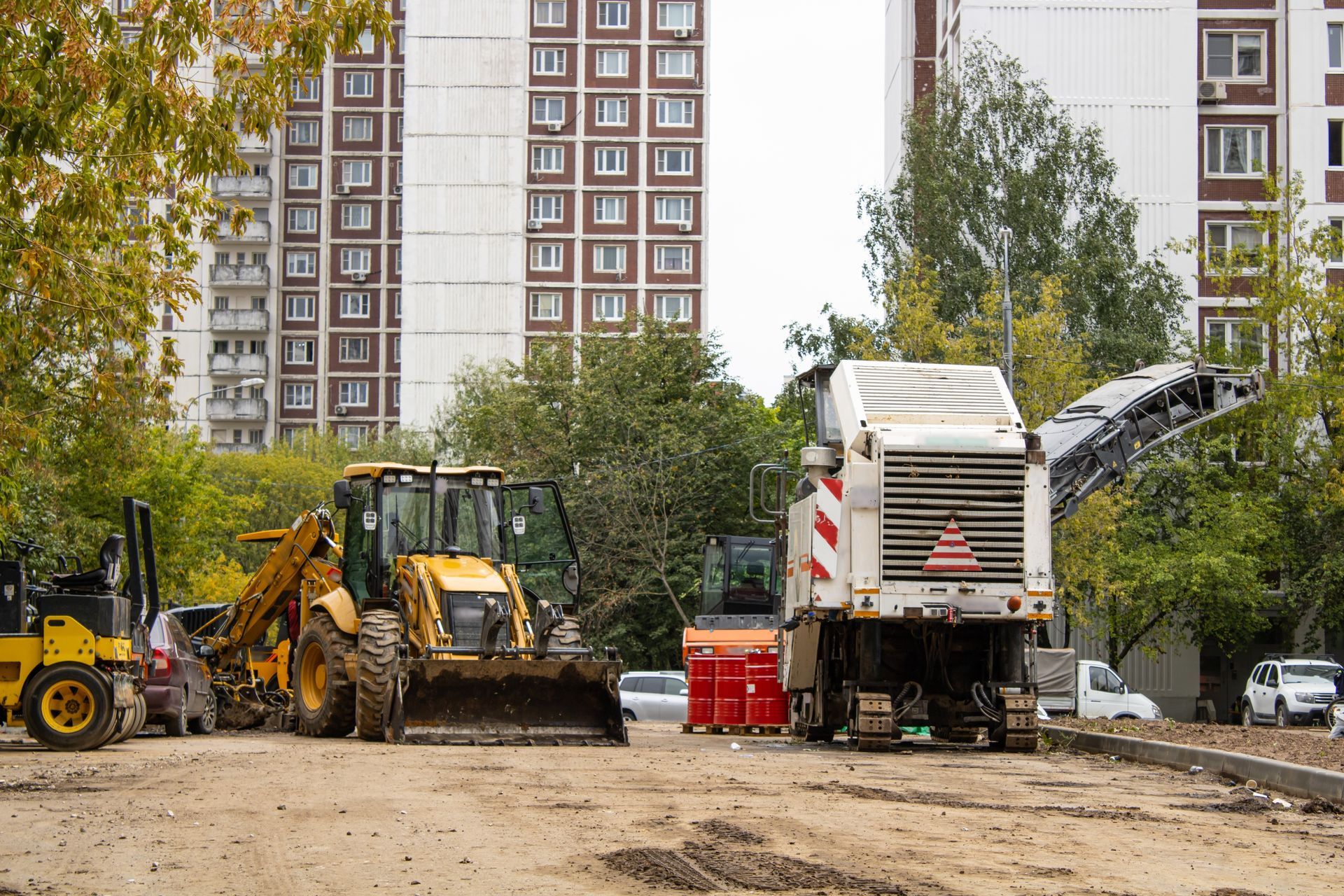Are Wrecking Balls Still Used?
Share this article:

Are Wrecking Balls Still Used ?
There may be no tool more synonymous with the
act of demolition than the wrecking ball. However, the wrecking ball is also a dying tool in demolition. Having reached their peak in the 1950s and 1960s, wrecking balls today live on more in songs by artists like Bruce Springsteen and Miley Cyrus than they do on demolition job sites.
So are wrecking balls still used at all?
In this post, we’ll take a closer look at wrecking balls, the different types of wrecking balls, when it still makes sense to use wrecking balls, and more. Here’s a closer look at what you need to know about the wrecking ball.
What is a Wrecking Ball?
A wrecking ball is nothing more than a ball of steel that weighs as much as 12,000 pounds. Wrecking balls are hung from cranes and swung into buildings to take them down, using inertia and gravity. Wrecking balls gained popularity in demolition work for two main reasons – using them was both quick and cheap. However, it’s the reasons why they’re used sparingly today that are perhaps more notable. We’ll get to those more in the forthcoming sections.
What are the Different Types of Wrecking Balls?
It’s not so much that there are different types of wrecking balls as there are different methods for using them and taking down a building. The wrecking ball as we know it is a 12,000-pound sphere that’s hung from a crane and swung into buildings. Used sparingly today, modern-day wrecking balls are more pear-shaped than circular-shaped. Pear-shaped wrecking balls are less likely to get stuck than conventional spherical ones.
But it’s really how the wrecking ball is swung into buildings as to where the key differences lie.
One method of wrecking ball demolition is allowing the crane to drag the wrecking ball back and then promptly release it. The momentum from this act will create enough force to smash into the building. Another method is using the crane boom to lift the wrecking ball up and over its target, and then drop it onto the building. Crane operators can also spin the crane boom, effectively whipping the wrecking ball into its target.
When are Wrecking Balls Used?
As we’ve noted throughout this piece, wrecking balls aren’t used very often on demolition job sites any longer. They were among the most popular methods of demolition beginning in the 1940s and peaked in the 1950s and 1960s. And while wrecking balls were once used as a cheap and effective way to take down a building, today they’re used just sparingly. In fact, the only time you’ll likely see a wrecking ball on a demolition job site is when a structure needs to be weakened before it’s demolished. In this case, the wrecking ball serves as the appetizer for other methods of demolition, which we’ll get to in the next section.
Despite the rarity of the wrecking ball these days, it’s still a method of demolition that’s romanticized among construction professionals and even in pop culture. Bruce Springsteen released an album titled “Wrecking Ball” in 2012, with the titular track describing the demolition of the former Giants Stadium in the New Jersey Meadowlands. However, it wasn’t a wrecking ball that took Giants stadium apart over the course of six months, but mechanical equipment.
Why Are Wrecking Balls Not Used That Much?
While wrecking balls were cheap and effective demolition tools in the mid-1900s, they were also very messy, noisy, and – to an extent – unsafe.
Let’s start by talking about safety issues. You may be surprised to learn that safety issues aren’t so much associated with the use of the wrecking ball as they are with the materials that could be released airborne during demolition. Asbestos and lead-containing building materials used to be very popular in both commercial and residential homes. And while these materials are harmless when left intact, when they’re damaged and their fibers are released into the air, hazards arise. As we learned more about the long-term health implications of asbestos and lead exposure, more specialized demolition methods became necessary to keep workers and the surrounding environment safe on demolition sites.
We previously mentioned the demolition of the old Giants Stadium and how it was done using mechanical equipment over a five-month period. Demolition crews also had to perform asbestos abatement, removing more than 1 million square feet of asbestos-containing materials. Had a wrecking ball been used, it could have created a lot of health and safety problems.
However, even despite the noise, mess, and potentially unsafe conditions that it helped create, the wrecking ball is largely retired today because better demolition technology has replaced it. There’s also been more of an emphasis on recycling and reusing demolished materials. Because of the mess that wrecking balls created, it was difficult to sort through materials that were salvageable and unsalvageable in the rubble.
Some of the common types of demolition that are widely used today in lieu of the wrecking ball include:
- Implosions using controlled explosive devices. This is one of the most common ways of taking down large commercial structures and stadiums.
- Reverse construction. This is a more tedious process that involves essentially deconstructing a building, mainly for the purpose of salvaging as many materials as possible.
- Partial demolition. This is done when only part of a building is demolished. This may also be known as “selective demolition.”
- Mechanical demolition. This type of demolition uses mechanical equipment, tools, and robots to take down buildings.
- Interior demolition. This is commonly done when a property owner wants a major interior renovation or remodel. It aims to keep the exterior intact, but allow for significant changes and build-outs to the interior portion of the building.
Contact Alpine Demolition Today
For more information on the rise and fall of the wrecking ball, and to learn more about the
tools used in demolition today, contact Alpine Demolition.



